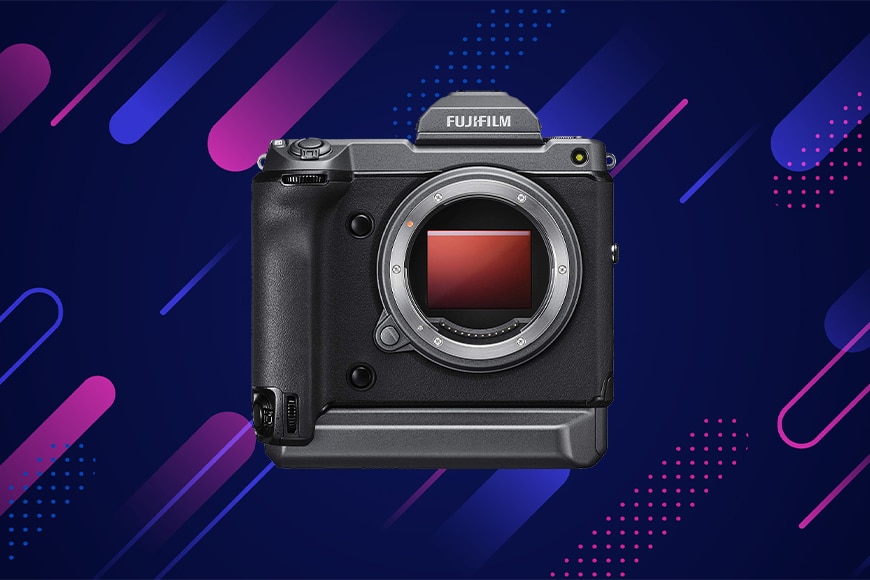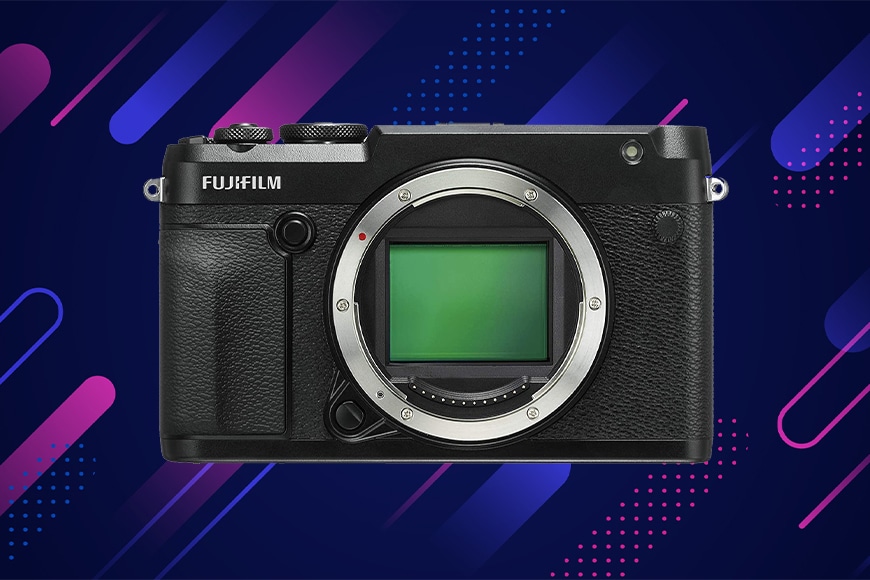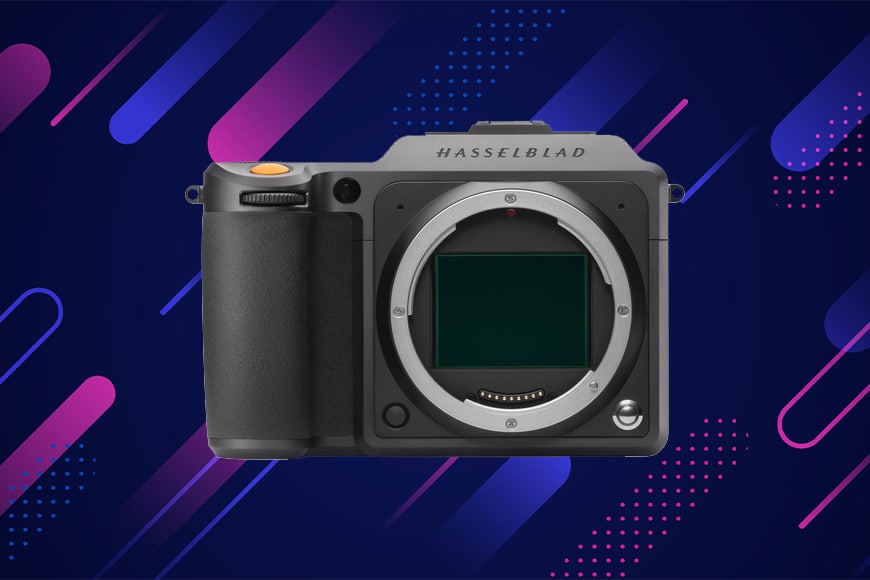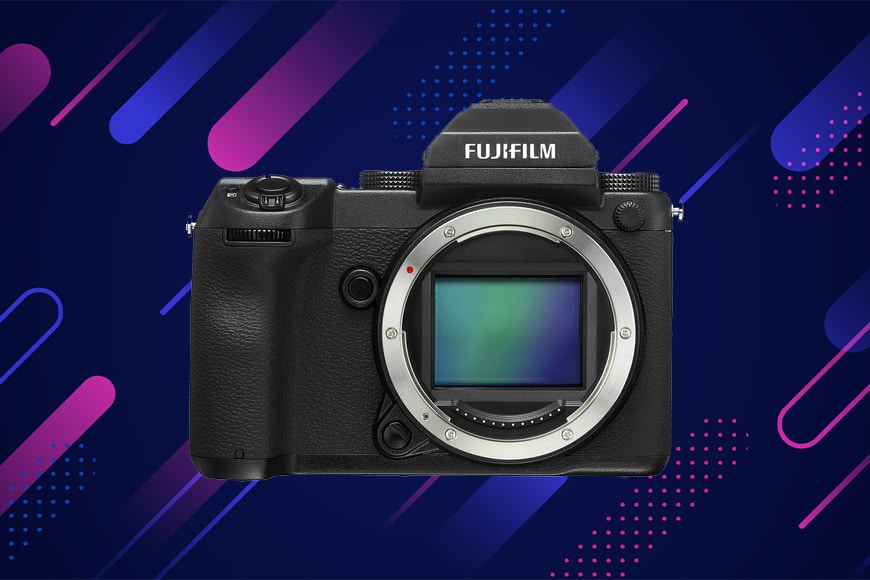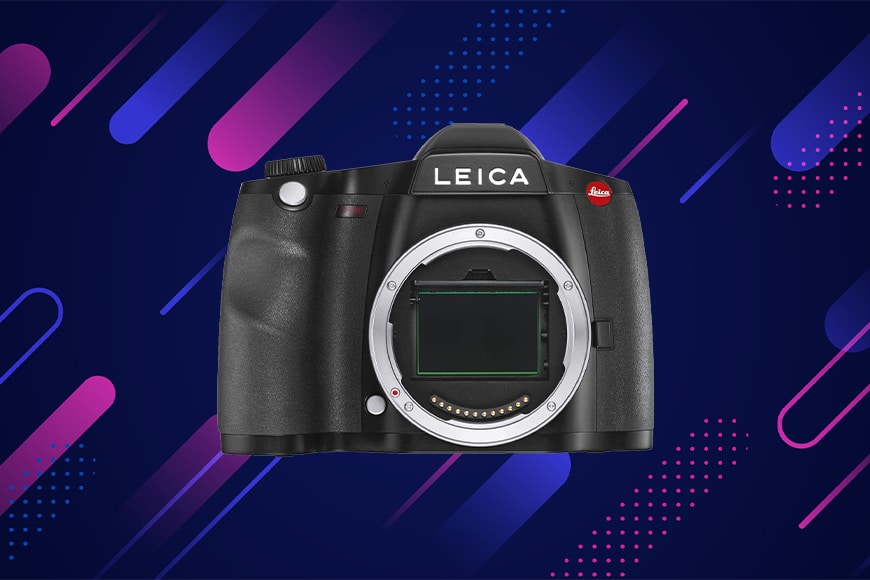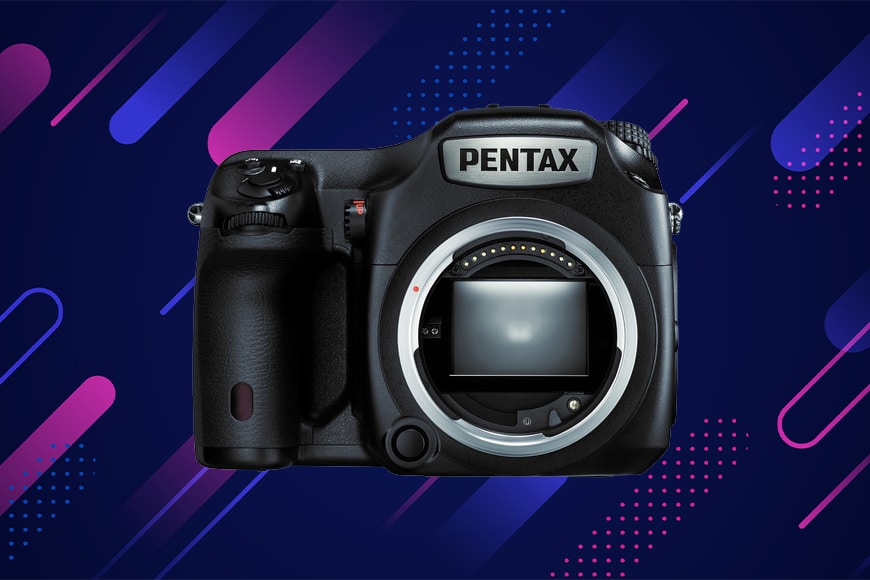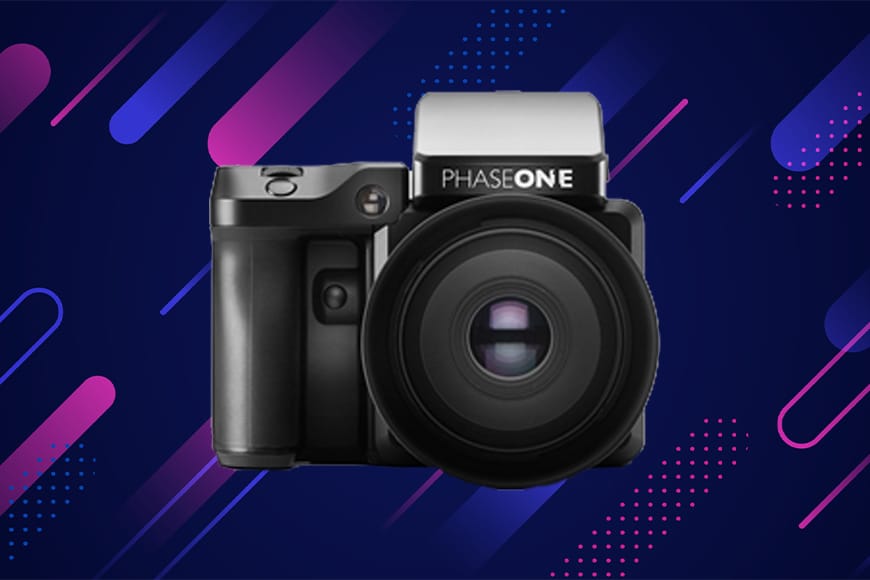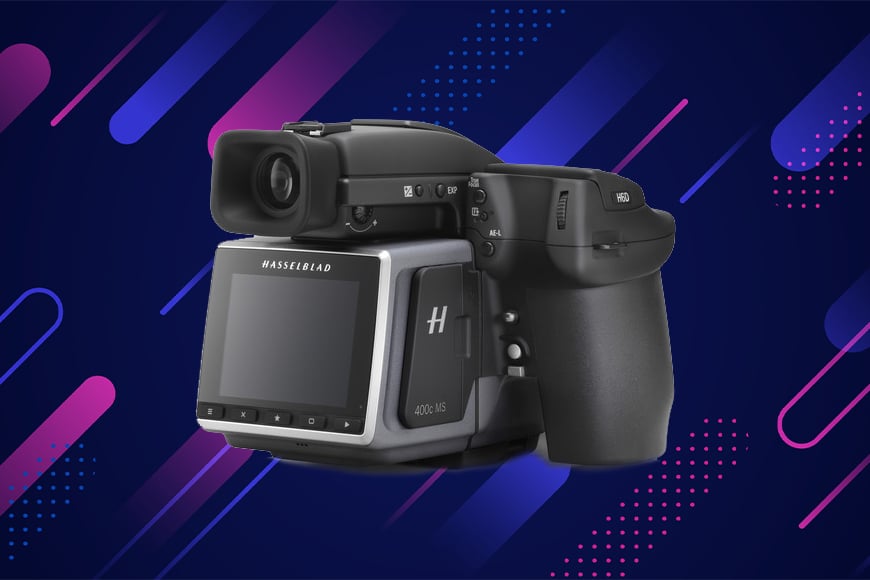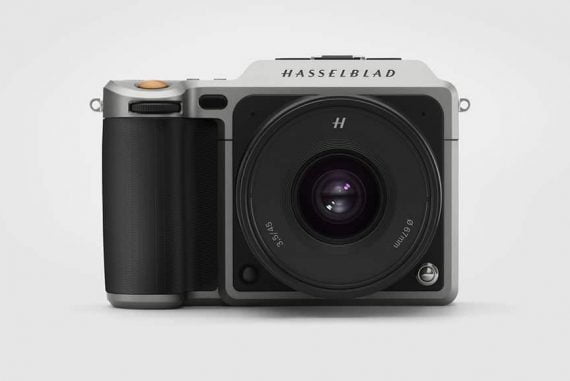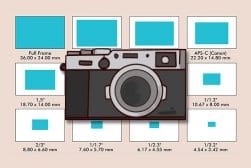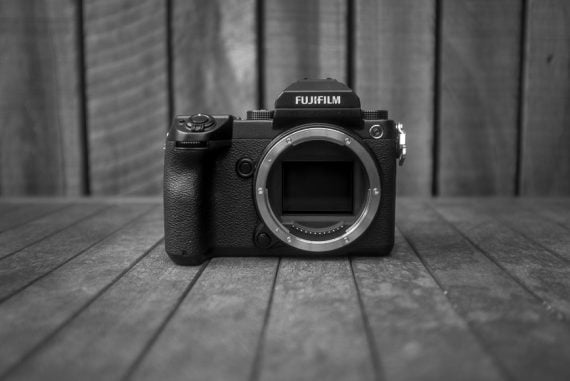
Best Medium Format Camera
Medium format cameras are a 'holy grail' for photographers who want the ultimate in image quality, and they're finally within our reach! Here are the best ones.
Shopping for the best medium format camera in 2024? Lucky you! These big sensor cameras are the holy grail of photography gear.
A few years ago, medium format cameras were big, bulky, slow and incredibly expensive – most photographers could only afford to rent them.
Since then, however, brands such as Fujifilm and Hasselblad have put them within our reach!
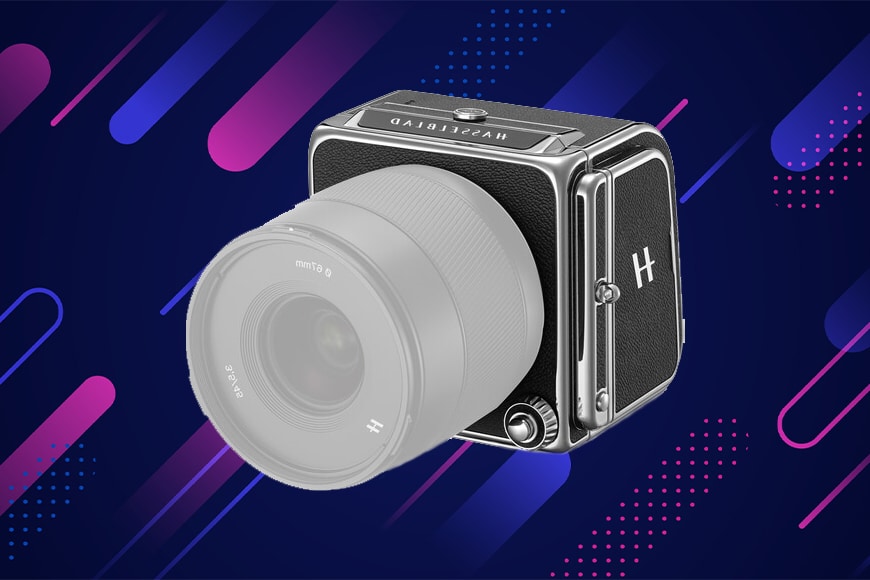
Stunning image quality packed into a small, light, and uniquely modular medium-format body.
In this guide, we’ll review the best digital medium format cameras of the year and answer the most common questions surrounding their use.
(For medium format film cameras, check our other guide.)
Whether you’re a pro photographer who needs the highest megapixel count for your clients or just a hobbyist who lusts after the ultimate in image quality, there’s something here for you.
So let’s dive right into the recommendations for the top medium format cameras of the year so far.
9 Best Medium Format Cameras in 2024
| Image | Product | Features | |
|---|---|---|---|
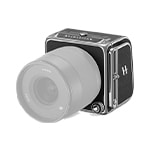 | Hasselblad 907X 50COUR #1 CHOICE |
| View Price → |
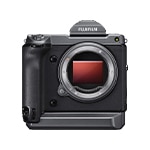 | Fujifilm GFX 100TOP RATED |
| View Price → |
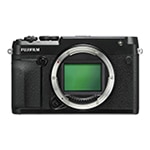 | Fujifilm GFX 50RPOPULAR CHOICE |
| View Price → |
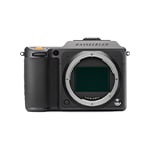 | Hasselblad X1D II 50CHIGHLY RECOMMENDED |
| View Price → |
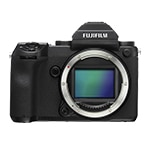 | Fujifilm GFX 50S |
| View Price → |
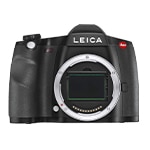 | Leica S3 |
| View Price → |
 | Pentax 645Z |
| View Price → |
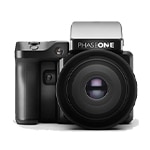 | PhaseOne XF IQ4 150MP |
| View Price → |
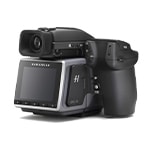 | Hasselblad H6D-400c |
| View Price → |
1. Hasselblad 907X 50C
- Excellent image quality
- Luxurious build
- Weather-sealed body
- Compact design
- Unique design/ergonomics
- Dual SD card slots
- Slow autofocus in low light
- Short battery life
- No hot/cold shoe mounts
The Hasselblad 907X 50C medium format camera features a 50-megapixel sensor supporting 14 stops of dynamic range.
While not outstanding compared to full-frame digital cameras, the 907X 50C has a very usable ISO range of 100 to 25600.
The focusing system is reliable thanks to 117 contract detection autofocus points – however, the 907X 50C only captures 2.7fps in continuous shooting, making it unsuitable for fast-moving action.
It captures 16-bit RAW files and shoots 2.7K (2720 x 1530) and Full HD (1920 x 1080) onto dual memory card slots, with the full use of the sensor in a 16:9 ratio.
The Hasselblad 907X 50C looks gorgeous and is a real experience to use – the menu and button layout are particularly simple and easy to navigate, and everything is pared back to remain minimal, disguising the power held within.
It also includes a 3.2″2.36M dot touch and tilt screen, making shooting from the waist much easier. On the flipside, there’s no OVF, but this is part of its appeal and a nod to Hasselblad medium format film cameras of the past.
Numerous pro photographers have called this medium format camera their favourite of the year – there really isn’t anything else like it – it’s a real object of desire.
2. Fujifilm GFX 100
- 102 Megapixels!
- Uses Fujifilm X-T3’s AF system
- Stunning image detail
- Battery life
- Poor ergonomics
- Big and heavy
- Lack of native lenses
The Fujifilm GFX100 looks a lot like an overgrown Fujifilm X-T4, and that’s not a bad thing as the retro-inspired design of Fuji cameras is gorgeous.
Beyond the looks, this 102 million pixel beast delivers unprecedented image resolution in a mirrorless medium format camera. The images are so impressive you can almost overlook the poor camera ergonomics!
The GFX100 utilises the same autofocus system as the X-T3 making for a highly accurate and response system with 425 AF points. What’s more, it captures 5 fps in bursts, making the Hassie above look sluggish in comparison.
A standout feature of the Fuji GFX is the brilliant 0.5″, 5.76 million dot OLED viewfinder, which is in addition to the 3.2″ tilting touch screen, 1.8″ top LCD and 2.05″ LCD on the rear.
As with all Fuji mirrorless cameras, the GFX100 features 16 Fujifilm film simulations, although it’s arguable as to whether a medium format camera owner would be shooting in JPEG…
3. Fujifilm GFX 50R
- Lightweight & compact
- Weather-sealed
- Stunning images
- Ergonomics
- Poor Autofocus
- Lack of native lenses
Like a Fujifilm X-Pro series camera, the GFX 50R takes on the rangefinder stylings and blends them with a range of performance features.
This is a mirrorless medium format camera that’s more accessible, affordable and far more comfortable to use than the GFX100.
The 50R optimises medium format sensor technology to deliver exceptional image resolution and absolutely huge files.
Autofocus is ok, provided your subjects are stationary like for a portrait shoot. The autofocus struggles to hold moving subjects even with face detection, making the GFX 50R less than ideal for street photography or anything involving action.
It handles low light with ease, thanks to its high ISO output, with images shot at ISO 25,600 still looking respectable when printed as large as 11 x 14″.
4. Hasselblad X1D II 50C
- Amazing image quality
- Brilliant EVF/touchscreen
- Great user interface
- Excellent build quality
- Weather-sealed
- Dual UHS-II card slots
- Poor battery life
- Sluggish sensor performance
- Poor AF performance in low light
The Hasselblad X1D II 50C is a space-age design offering much-needed improvements over its predecessor.
The uniquely-styled medium format digital camera body features a deep grip for optimal comfort, fitting in perfectly with its industrial design aesthetics.
The Hasselblad camera features a huge 3.6″ LCD touchscreen with 2.4 million dots of resolution and a 4:3 ratio matching the medium format sensor.
The OLED EVF is impressive with 3.69 million dots of resolution, making the scene display in tack-sharp clarity. The user interface is well designed and a joy to use.
It’s disappointing that the X1D II is slow by today’s standards for a high-end medium format camera – powering on, focusing and capturing the shot feels sluggish and takes far too long, leading to potential missed photo opportunities.
However, one glance at the incredible image detail when you’re editing the images on your computer, and all sluggishness is forgotten!
5. Fujifilm GFX 50S
- Fast and accurate autofocus
- Light and compact
- Detachable EVF
- Excellent video quality
- Lack of native lenses
- AF can be sluggish
Alongside the Fujifilm GFX100 release was the smaller but equally impressive GFX50S.
While the image quality is excellent, Fuji opted for a 50 megapixel Bayer sensor over their own X-Trans – the 44 x 33mm sensor delivers impressively high image resolution.
The focusing system on the 50S is second to none in the medium format lineup. Plus, it captures 3fps in burst mode.
With an ISO range of 100-12800 and an extended range up to 102400, this Fujifilm camera’s low light performance is excellent.
The GFX50S has a very similar style and feel to the Fujifilm X-H1, thanks to the grip and top LCD, making it comfortable for extended shooting.
It’s hard to ignore the rear’s boxiness that supports the 3.2″, 2.36 million-dot tilting touch screen – the design is likely to be polarizing.
The removable 0.5″EVF is a 3.69 million-dot OLED with 100% coverage, ensuring your entire scene is represented faithfully and in all its glory.
6. Leica S3
- Stunning 64MP image quality
- It’s a Leica
- 4K video
- Some outdated features
- The price tag!
Leica is a brand synonymous with high precision engineering and superb optics. They are also known to have some of the best medium format digital cameras in the market today. The Leica S3 has a 64-megapixel sensor delivering stunning images and 15 stops of dynamic range.
The Leica S3 DSLR is organic, curvaceous and relies on a pentaprism viewfinder. However, the 3″, 921k-dot LCD is not up to the standards of other cameras in our guide.
It records 4K at 24 fps and Full HD up to 30 fps – external recording is available for Full HD with 4:2:2 8-bit colour sampling, although it has to be asked – who buys medium format digital cameras to shoot video, let alone a Leica?!
While the S3 boasts impressive specs, it comes with an exceptional price tag – one of the most expensive medium format cameras available here in 2024.
With Leica cameras, you’re purchasing a camera and the prestige that comes with the name. You’ll feel good using one… although your bank account may not.
7. Pentax 645Z
- 51.4-megapixel sensor
- Exceptional low light performance
- Ugly!
- Rather dated
- Focus performance
The Pentax 645Z is another DSLR medium format camera that’s a beast with a 51.4-megapixel sensor.
The 645Z is getting on in years, and the design is not a redeeming feature – especially compared to the gorgeous GFX50S or Hasselblad X1D II 50C.
Odd looks aside, the Pentax image sensor, PRIME III processor and native ISO of 100 – 204,800 makes lowlight shooting on the Pentax 645Z effortless.
The weather-sealed body has a pair of standard SD slots and the rechargeable battery delivers 1230 shots while powering the bright 3.2″ 1.03 million dot tilting TFT LCD.
As the 645Z is older, focusing performance isn’t great. The Pentax is best for studio or portrait settings where autofocus performance is nice but not essential.
8. PhaseOne XF IQ4 150MP
- 150 Megapixels!
- Native SO 50-25,600
- Incredible image quality
- Lots of tethering options
- Astronomical price
- Slow performance
If you thought the 100MP Fuji was impressive, meet the PhaseOne XF IQ4 150MP with its 152-megapixel sensor. Its sensor is 2.5 times bigger than a 35mm full-frame sensor!
PhaseOne delivers insane image quality and unimaginable levels of detail.
It’s yet another camera that won’t win any beauty pageants – everything about it is big and boxy. The IQ4 is a purpose-built tool designed to capture the highest level of image detail possible.
The PhaseOne XF IQ4 is a ‘digital back’ that attaches to the PhaseOne XF camera body. There’s also a detachable viewfinder. The sensor delivers 16-bit RAW files and a remarkable 15 stops of dynamic range.
That’s a lot of data processing the camera has to do and as a result, the XF IQ4 is slow to respond under any conditions. Powering up, autofocus and image capture are all painfully slow.
It features a 3.2-inch multi-touch display, an XQD and SC card slot, and several new tethering options including wireless, USB-C and Ethernet – useful when burning through 150 megapixel images!
9. Hasselblad H6D-400c
- 100-megapixel
- Up to 400-megapixel images!
- Big and heavy
- Need to take out a second mortgage
Where the Hasselblad X1D II 50C is slick, the Hasselblad H6D-400c is an abstract of brutalist design. A tool for serious pro use, this 100-megapixel camera delivers exceptional image detail for an enormous printing scale.
Like the PhaseOne, the Hasselblad is a digital camera back attached to Hasselblad H Series camera bodies – the average combined weight is well over 2kg.
The 400c is a multi-shot camera that uses sensor-shift technology to capture multiple images within an instant.
In 6-multi-shot mode, six images combine to create a single 400MP image, delivering a 2.4GB, 16-bit Tiff file. Fortunately, it features dual card storage for an SD and a CFast card.
It’s not built for action photography – it’s a studio camera that’s best on a tripod while tethering to an external recorder. Plus, it can capture 4K and Full HD video at 30 fps.
Medium Format Cameras FAQs
- What is a medium format camera?
Medium format photography refers to the cameras that use 120 film size that’s much larger than the standard 35mm camera film commonly used. 120 film is still readily available today as a standard film size.
In digital camera photography, medium format sensors are larger than a standard 35mm equivalent full-frame sensor and achieve higher resolution.
- How many megapixels is medium format film?
Medium format film cameras have a resolution of approximately 83 megapixels (83MP) with a 60 x 60mm frame and 125 megapixels (125MP) with a 60 x 90mm frame.
- What aspect ratio is medium format?
Medium format can be shot in any aspect ratio with 1:1 and 4:3 being the most common.
- What is the advantage of a Medium Format Camera?
Considering the advantages of a medium format camera raises the question: ‘ Is medium format better?’.
In short, medium format is better than other formats as a greater level of detail is captured by the larger image sensor. With greater detail, medium format photography files can be edited without compromising the quality – plus, you can print large scale.
The second most common question is, ‘Is medium format better than full-frame?’ – this is a hotly debated question. There are several factors when comparing medium format to full-frame cameras.
In most cases, a full frame camera is smaller and lighter than a medium format.
While medium format cameras have greater image detail, they’re limited in their functions compared to full-frame cameras. Video, autofocus and low light performance are just a few examples where full-frame cameras win over medium format.
- Why are Medium Format Cameras so expensive?
Medium format cameras are usually high-end and expensive brands.
With a much bigger sensor, the camera needs a powerful image processor to manage precise information – these are expensive to produce. Plus, due to the larger sensor and framework supporting it, the cameras are bigger – bigger and more advanced technology cost more to make.
In many cases, medium format camera manufacturers only produce these models, so they’re an exclusive item.
- How do I make a digital image look like a medium format? (How do you fake a medium format?)
The best way to make a digital image look like a medium format is with the Brenzier Method.
The Brenzier Method uses a conventional camera and lens to capture several shots of the same scene – as though you were photographing a panorama. You ‘stitch’ the images together in editing software to create a single image.
The advantages of this process are that you’ll produce photos that have great detail, shallow depth of field and excellent bokeh and background.
Here are the steps to achieve a medium format look with full frame sensors or cropped sensors.
- With a 50mm prime lens, set your aperture as wide as possible – the smallest f-number on the lens.
- If using a zoom, keep your focal length at the same distance through the shoot.
- Focus manually to ensure your subject is in focus – avoid touching the focus again.
- Take a series of RAW images capturing all elements of the scene. Shoot four images from left to right – increasing the number with more experience.
- Make sure you overlap each shot with the previous one to avoid gaps in your final image.
- Load all of the RAW images into photo editing software such as Adobe Lightroom.
- Process them as a batch to ensure that any edits impact every photo in the series.
- Export the RAW images as JPEG files with the long-edge between 700-1000 pixels.
- Open Photoshop and select File, Automate and then Photomerge.
- A window appears – ensure that the default setting is selected (Layout: Auto and Blend Images Together).
- Locate and select your images and hit OK.
- Photoshop merges the files and creates a final panorama shot.
- Crop the file and admire the results of a high-resolution image with a stunning depth of field and background.
Final Words
Thanks to Fujifilm and Hasselblad, digital medium format cameras are more accessible to photography enthusiasts.
While the price of medium format cameras and lenses is still high, the investment is well worth it if you intend to undertake high-resolution image-making and capitalise on that sensor size.
Fashion photographers, product photographers and portrait shooters will all attest to the benefits of medium formats. Landscape, wildlife and even street shooters are picking up such film or mirrorless cameras to optimise image detail.
What are your thoughts on medium format cameras? Do you own a medium format camera, or have you ever captured images with this style of a camera?
Share your thoughts and photography experiences with medium format cameras to join the conversation.





